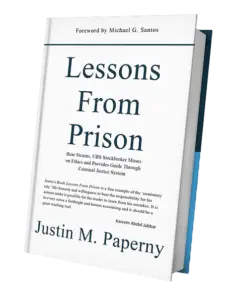Someone in our community texted me, “How do you think a judge would respond to the new BOP memo about going to home confinement instead of the halfway house?”
Let’s have some fun. Even though I’m not a lawyer or a judge, let me put my judge hat on. I’ve sat through more than 1,500 sentencing hearings. I’ve listened to federal judges talk about preparation and fake remorse. So today, while I’m in Los Angeles with my family, I’m stepping into character.
Here’s my attempt to play judge. Disclosure: I’m not a judge. I’m a dude who’s been to prison and worked with a lot of people. This is how I think a judge who has seen it all might respond.
By: A Federal Judge Who’s Read 10,000 Excuses
Let’s get one thing out of the way: I don’t oppose home confinement. I don’t oppose earned time credits. I don’t even oppose sentencing reform—at least not when it’s done by people who know what they’re doing.
What I do oppose is the illusion of change without the substance to back it up.
Last week, the Bureau of Prisons issued a new directive—one that, on its face, sounds almost revolutionary. Home confinement is to be prioritized. Halfway houses are to be reserved for those who need structure. Unit teams are instructed to use conditional placement dates, apply statutory authority properly, and—this one’s rich—make “individualized decisions.”
I’ve read the memo. I’ve read the statute. I’ve read more “extraordinary and compelling” motions than I care to count.
And I’ll tell you what this is: window dressing, unless the people inside that system do something different.
The System Isn’t Broken. It’s Operating as Designed.
Let’s not pretend this memo changes the machine. The BOP is a bureaucracy. It’s not a think tank. It doesn’t reward creativity. It punishes deviation.
So while I appreciate the language of reform—really, I do—I also know how this will go.
A prisoner will assume the memo guarantees something.
Their family will email me.
Their lawyer will file a motion citing 18 U.S.C. § 3624(g), or § 3582(c)(1)(A), or both.
And I’ll open a file with nothing in it but recycled phrases about “rehabilitation” and “acceptance of responsibility.”
Don’t Tell Me You’re Ready. Show Me.
This memo doesn’t say you will go home. It says you may, if the staff feel they have enough information to move you.
Let’s translate that:
No plan? No move.
No housing verification? No move.
No work documentation? No move.
No evidence that you’ve done anything beyond sit and wait? No move.
I don’t care what the memo says about “individualized decisions.” If you’ve submitted nothing but a boilerplate letter, you’ve made my decision easy.
What I Look for—and What I Don’t
I look for effort. Documented. Consistent. Submitted before the final 90 days.
If I see a clean release plan that includes:
- A detailed weekly record of what you’ve done inside
- Program participation with start and end dates
- Letters of support that are not templated
- A narrative that takes ownership without groveling
- And contact information for everyone involved in your transition.
Then you have my attention.
But if you think quoting the BOP memo is enough?
Let me quote something back: denied.
You’re Not the Exception. Prove You’re the Outlier.
I’ve sentenced people who said, “Give me one chance, I’ll show you.”
Five years later, they’re in front of me again, this time quoting policy.
What I respect is when someone submits a plan—not a plea. Something I can hand to a probation officer or a case manager without having to apologize for the vagueness.
That’s what this memo is supposed to incentivize. Not slogans. Not sympathy. Strategy.
The System Doesn’t Owe You. You Owe It an Explanation.
I don’t need you to be extraordinary. But I need you to be specific.
Don’t tell me “I’ve changed.” Show me who helped you. Show me what you’ve built. Show me what you’ve taught someone else.
And if you’ve done none of that, don’t blame the BOP for keeping you in.
Blame the blank page in your central file.
Signed,
A Judge Who Doesn’t Have Time for Excuses—Only Proof



